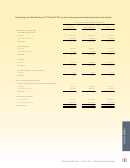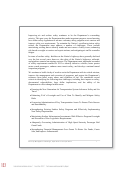Performance And Accountability Report - Fiscal Year 2013 - Federal Aviation Administration - U.s. Department Of Transportation Page 131
ADVERTISEMENT
 1
1  2
2  3
3  4
4  5
5  6
6  7
7  8
8  9
9  10
10  11
11  12
12  13
13  14
14  15
15  16
16  17
17  18
18  19
19  20
20  21
21  22
22  23
23  24
24  25
25  26
26  27
27  28
28  29
29  30
30  31
31  32
32  33
33  34
34  35
35  36
36  37
37  38
38  39
39  40
40  41
41  42
42  43
43  44
44  45
45  46
46  47
47  48
48  49
49  50
50  51
51  52
52  53
53  54
54  55
55  56
56  57
57  58
58  59
59  60
60  61
61  62
62  63
63  64
64  65
65  66
66  67
67  68
68  69
69  70
70  71
71  72
72  73
73  74
74  75
75  76
76  77
77  78
78  79
79  80
80  81
81  82
82  83
83  84
84  85
85  86
86  87
87  88
88  89
89  90
90  91
91  92
92  93
93  94
94  95
95  96
96  97
97  98
98  99
99  100
100  101
101  102
102  103
103  104
104  105
105  106
106  107
107  108
108  109
109  110
110  111
111  112
112  113
113  114
114  115
115  116
116  117
117  118
118  119
119  120
120  121
121  122
122  123
123  124
124  125
125  126
126  127
127  128
128  129
129  130
130  131
131  132
132  133
133  134
134  135
135  136
136  137
137  138
138  139
139  140
140  141
141  142
142  143
143  144
144  145
145  146
146  147
147  148
148  149
149  150
150 ENHANCING FAA’S OVERSIGHT AND USE OF
those changes aircraft will also evolve, allowing even greater
integration and utilization.
DATA TO IDENTIFY AND MITIGATE SAFETY
RISKS
ACTIONS TAKEN IN FY 2013:
Publication of UAS Roadmap: This action has been completed.
KEY CHALLENGE:
The first edition of the UAS Roadmap was released and
Identifying Trends in Operational Errors and Determining Their
published on November 7, 2013. The UAS Roadmap will
Root Causes
provide (initial) necessary stakeholder guidance for the
path to UAS integration. The Roadmap will be updated and
ISSUE:
published annually, and will include lessons learned, progress
The FAA must make better use of data on operational errors to
and accomplishments from the previous year. As part of the
investigate incidents, identify trends and mitigate their risks.
development of the UAS Roadmap, the FAA received detailed
To identify root causes of safety problems and mitigate their
recommendations on integration related tasking from the UAS
risk, the FAA needs to fine tune its approach to how it collects,
Aviation Rulemaking Committee (ARC). The FAA considered
verifies, and uses safety data.
these UAS ARC recommendations in the development of the UAS
Roadmap.
To realize the full potential of hte Air Traffic Safety Action
Program (ATSAP), the FAA must close program gaps: such as a
Execution of Research Activities as Defined by the UAS
lack of a formal process to review committee decisions on errors
Integration Office: This action is ongoing. The FAA has been
and enforce key ATSAP guidelines and requirements.
executing on planned research requirements and is coordinating
research activities with other Federal agencies, including
FAA lacks an accurate baseline on the number of separation
National Aeronautics and Space Administration and the
losses due to its limited use and review of the Traffic Analysis
Department of Defense. Research focus areas include Sense and
and Review program data, gaps in ATSAP reporting, and
Avoid (SAA) and Command and Control (C2). In conjunction with
inconsistent classification of separations losses.
RTCA Inc., the FAA launched a new Special Committee (SC-228)
which will focus on standards development for SAA and C2
FAA’s new policies transfer the function of investigating
systems.
operational errors from the facilities where they occur to the air
traffic service areas. Facility managers raised concerns about
Commencement of the six UAS Test Site selection process:
whether the Service Areas have enough staff and knowledge of
This action has been completed. The solicitation (Screening
local flight procedures to successfully carry out this responsibility.
Information Request) for the test site selection process was
publically released on February 14, 2013.
The mitigation strategy for operational errors included in the new
policies lack a previously identified causal factors, trends, and
Actual selection of the six UAS Test Sites: This action is
follow-up actions to address the—considered to be key elements
in progress. The selection of the six test sites by the FAA
for mitigating the highest safety risks.
Administrator is expected by the end of 2013.
ACTIONS TAKEN IN FY 2013:
Initial flight testing activities in support of the expansion of
The FAA ATO is conducting its largest and most significant
small UAS in the Arctic: This action has been completed. Initial
safety improvements regarding the way air traffic control risk,
flight tests were conducted in the Arctic using small UAS on
safety performance, and analysis of safety risks are managed in
September 12, 2013.
the United States. From implementation of voluntary reporting,
to new electronic separation loss detection programs, the
Release of the small UAS Notice of Public Rulemaking: This
development of standardized risk assessment and validation
action is pending. The FAA continued work with the Department
processes and the establishment of a proactive safety
of Transportation on development of language to be included
management system, the FAA has greatly enhanced its ability
in the small UAS Rule. The release of the Small UAS Notice of
to identify precursors, root causes, and trends of safety risks
Proposed Rulemaking (NPRM) for public comment is planned for
system-wide rather than reacting to single incidents. Following
2014.
our Safety Management System which requires continuous
improvement of our processes, the ATO is making improvements
129
|
|
Federal Aviation Administration
Fiscal Year 2013
Performance and Accountability Report
ADVERTISEMENT
0 votes
Related Articles
Related forms
Related Categories
Parent category: Business









